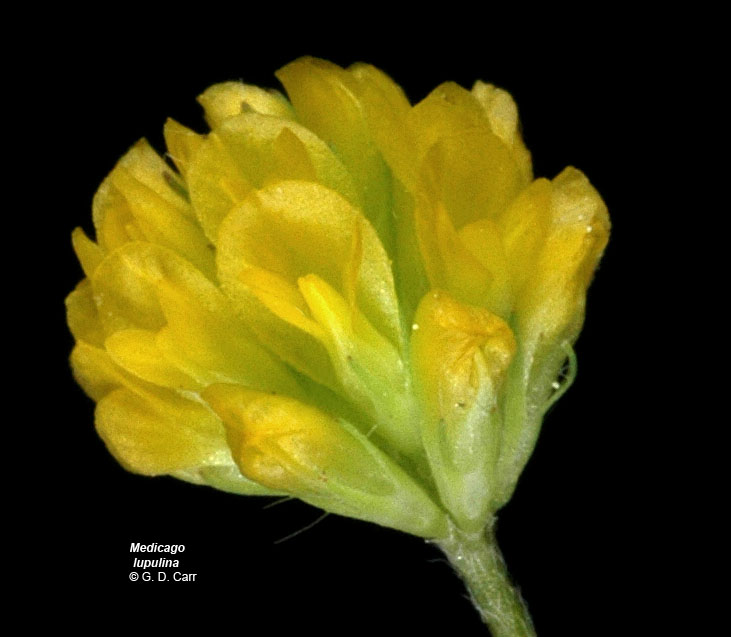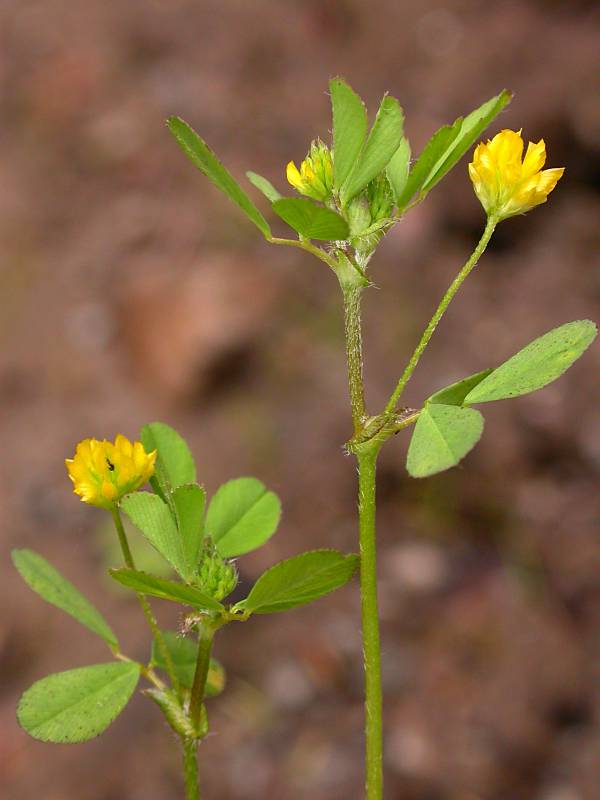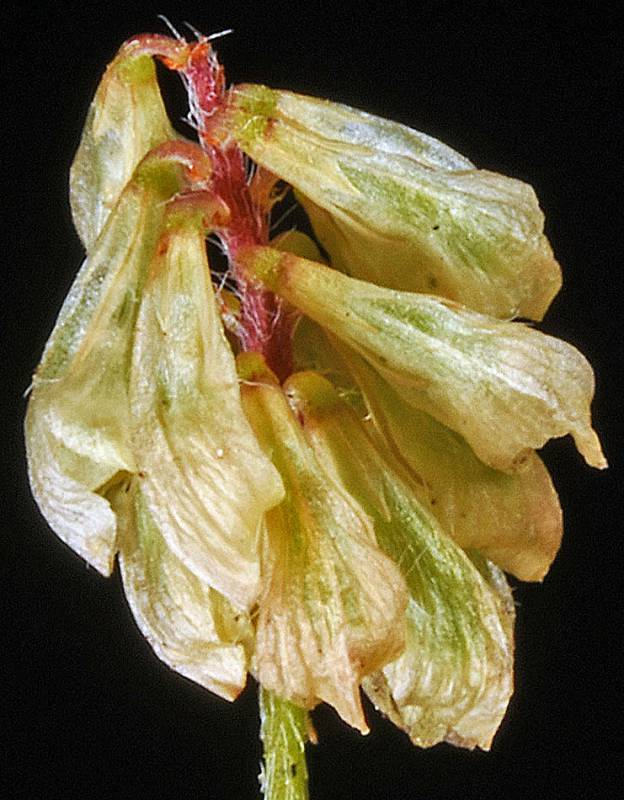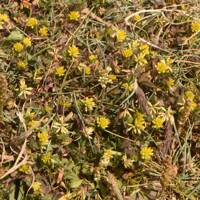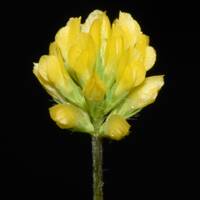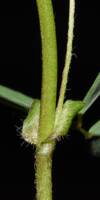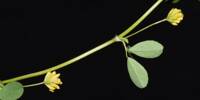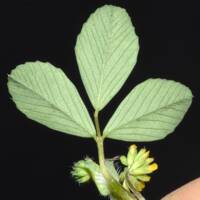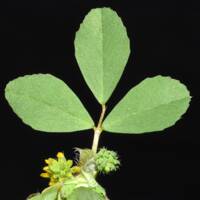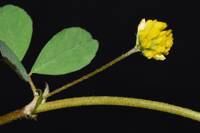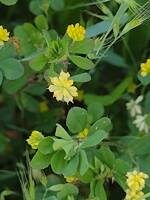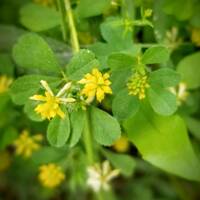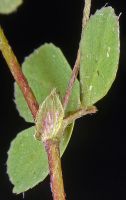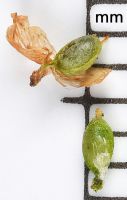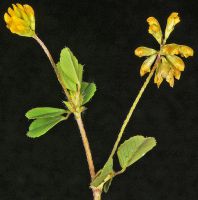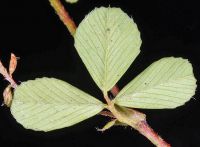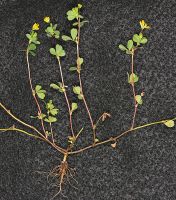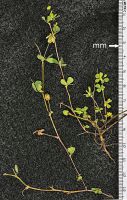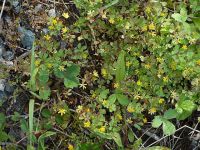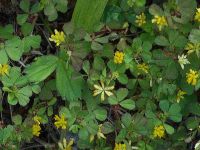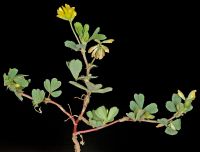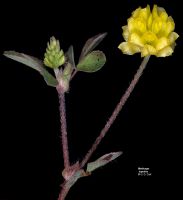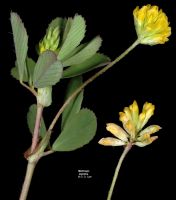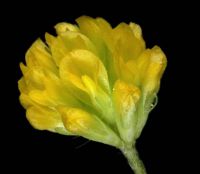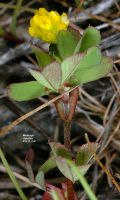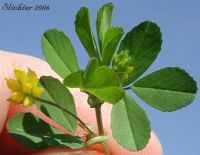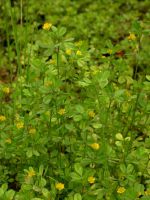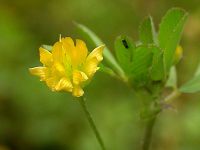Distribution: Occurring chiefly west of the Cascades crest in Washington; Alaska to California, east across much of North America to the Atlantic Coast.
Habitat: Forest openings, roadsides, fields, lawns, wastelots, and other disturbed sites.
Flowers: April-September
Origin: Introduced from Europe
Growth Duration: Annual
Conservation Status: Not of concern
Pollination: Bumblebees, bees, butterflies, flies
Sparsely pubescent annual, the stems 1-several, 1-5 dm. long, prostrate or ascending to erect.
Leaves trifoliate, short-petiolate; leaflets obovate to obcordate, 5-20 mm. long, denticulate above mid-length; stipules 3-5 mm. long, acuminate, entire.
Inflorescence of 3- to 20-flowered heads, 6-7 mm. broad, on short, axillary peduncles; flowers pea-like, yellow, reflexed, 3-3.5 mm. long; calyx glabrous, 5-nerved, half as long as the corolla, the 5 teeth narrowly lanceolate, entire, the upper 2 broader than and half as long as the lower 3; banner hood-like, folded, nearly hiding the shorter wings and keel.
Pod 1-seeded, longer than the attached style.
Publication: Fl. Oxon. 231. 1794.
PNW Herbaria: Specimen records of Trifolium dubium in the Consortium of Pacific Northwest Herbaria database
WA Flora Checklist: Trifolium dubium checklist entry
OregonFlora: Trifolium dubium information
E-Flora BC: Trifolium dubium atlas page
CalPhotos: Trifolium dubium photos

